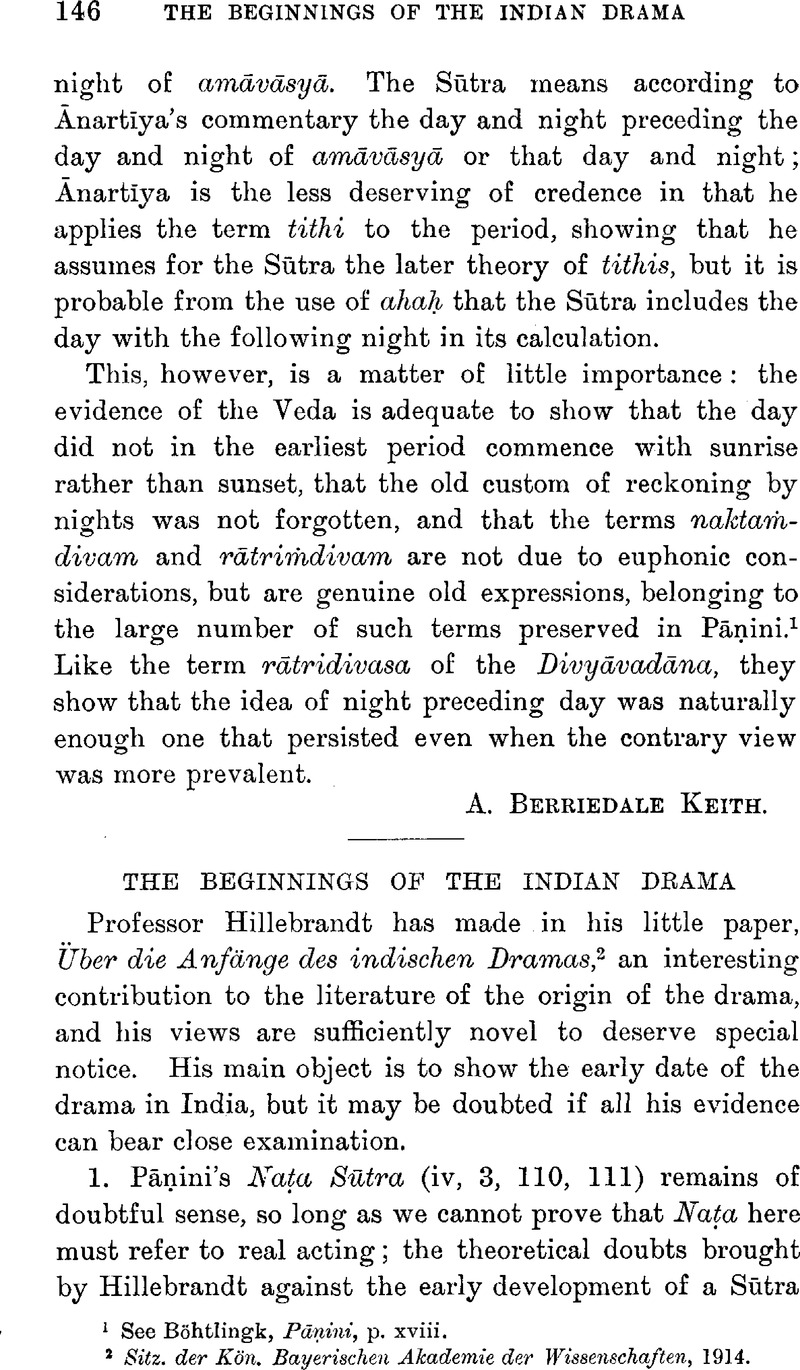No CrossRef data available.
Article contents
The Beginnings of the Indian Drama
Published online by Cambridge University Press: 15 March 2011
Abstract

- Type
- Miscellaneous Communications
- Information
- Copyright
- Copyright © The Royal Asiatic Society 1916
References
page 146 note 2 Sitz, der Kön. Bayerischen Akademie der Wissenschaften, 1914.Google Scholar
page 147 note 1 Against Pischel, , Die Heimat des Puppenspieles (Halle, 1900).Google Scholar
page 148 note 1 Anfänge der Kunst, pp. 214 seqq.Google Scholar
page 148 note 2 ERE. iv, 868.Google Scholar
page 149 note 1 Held to be Greek by Bloch, ZDMG. lviii, 455.Google Scholar
page 149 note 2 xxiv, 106.
page 149 note 3 Driesen, , Der Ursprung des Harlekin (Berlin, 1904).Google Scholar
page 150 note 1 The cases cited by Hillebrandt, (p. 30, n. 1)Google Scholar are all far short of a real drama.
page 150 note 2 Hillebrandt, (p. 31)Google Scholar rightly declines to believe with Hertel that Ākhyāna = drama. I am glad to find my views on von Schroeder's theory accepted by ProfessorRidgeway, W., The Dramas and Dramatic Dances of non-European Races, pp. 154–6.Google Scholar
page 150 note 3 ZDMG. lxivGoogle Scholar;534 seqq.; JRAS. 1912, pp. 411 seqq.
page 151 note 1 The play here shows the prologue, the division into acts, the mixture of prose and verse and of dialects, and the figure of the Vidūṣaka, all pointing to a history of considerable duration and strengthening the view of Patañjali's date as about 150 b.c. Cf. Winternitz, , VOJ. xxvii, 41 seqq.Google Scholar
page 151 note 2 It may be noted that Professor Hillebrandt's view of the ape's occupation (p. 27, n. 2) is based on popular, not scientific zoology. But doubtless his view was that of the maker of the pictorial scene. It may also be noted that the rendering of kulānurūpesu naccaṭhānesu (p. 11)Google Scholar as “at theatres suited to clansmen” seems strange. The sense would bètter be (he acquired proficiency when reborn in an actor's family) “in theatrical subjects suited to one of his family”.


